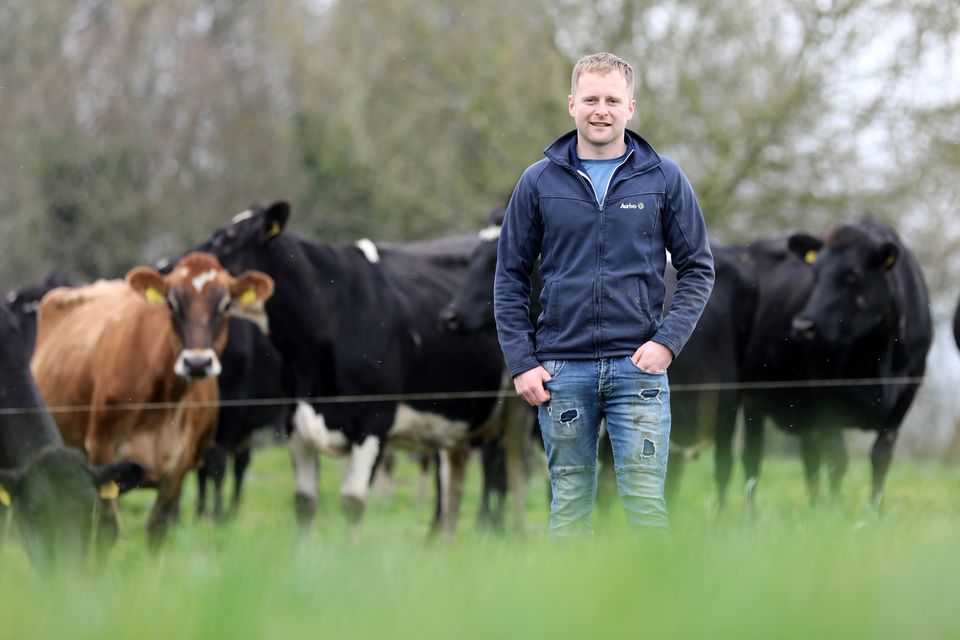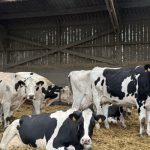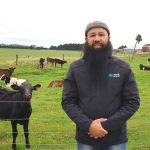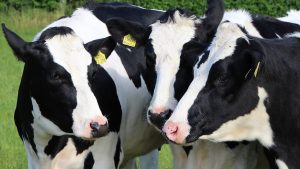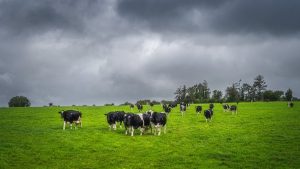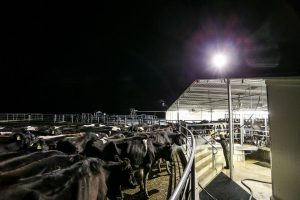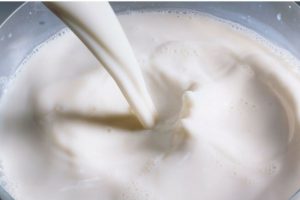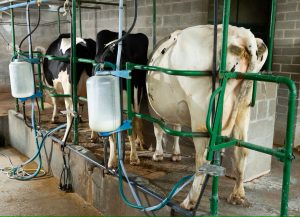
This Sligo dairy farm has doubled its herd size in five years. They explain how and why they have expanded without a derogation – which is ‘not worth the headache’
Dairy expansion has been a gradual, strategically planned business venture for award-winning Sligo farmer Evan Hunt (27) and his father John.
Over the years, the Hunts have invested in farm infrastructure, soil fertility, reseeding, yard development and animal handling facilities to future-proof their system.
In the last five years they have more than doubled their dairy enterprise, with no derogation. They formed a father-and-son partnership in 2019, after Evan spent a couple of years working on a dairy farm in Galway, having complete an advanced dairy certificate at Ballyhaise Agricultural College in Cavan.
Numbers have grown steadily from 60 cows in 2019 to 128 fully genotyped cows with an EBI of €219 in 2024; they will peak at 140 in spring next year.
The Aurivo milk suppliers farm 96ha (237ac) at Tullycusheen, Tubbercurry – it encompasses 45ha of owned land and a 53ha milking platform. Soil types are 50pc dry and 50pc mixed, with a current stocking rate of 1.62 LU/ha (stocked at 140kg N/ha).
“From the outset, my goal has been to expand the farm,” says Evan. “However, I did not want to build a system around derogation when it can be taken from you overnight. It is not worth the headache.
“We have farmed outside of a derogation all along. Every step we have taken has been to make the farm sustainable, profitable and viable, as we are investing in a long-term plan.”
The Hunts leased a 16ac block in 2017 to increase numbers to 86 cows, and then two years later bought a 44ac block, which paved the way for expansion.
“Land base has always been an issue for us when expanding, especially at the start,” says Evan. “We have been gradually drip-feeding in land over the years as it has become available to expand the farm sustainably.
“The way expansion happened here meant that it was not a case that one block of land came in, and it could easily be stocked within 12-24 months.
“Land is spread out in a Y-shape, and the parlour is not in the centre of the farm. This is a typical set-up for a west of Ireland.”
Cubicle space
The Friesian-cross-Jersey herd is milked through a 20-unit herringbone parlour installed in 2020-21, which replaced their four-unit parlour.
Cubicle space was the next focus. Up until this year, they had 52 cubicles for 100-odd cows and with renting sheds “unviable long-term for us, we looked to create more cubicle space”.
Their new state-of-the-art cubicle shed, which will house most of their herd under one roof, will be completed in the coming weeks.
It will contain 124 cubicles, in addition to their current 52, and 115-cow slurry storage for their zoned area, which is 18 weeks, along with 18 bays of feed space to feed up to 160 cows.
Grassland management
Evan, the 2023 Sustainable Grassland Young Farmer of the Year, will use the new cubicle shed to “help us manage and utilise grass better, but not take away from it”.
The Hunts’ milk production system is driven by 275 days at grass from mid-February to early November, with a pre-grazing yield of 1,350kg DM/ha.
Evan carries out 40+ grass walks annually and uses PastureBase Ireland as a decision support tool, in addition to autumn and spring rotation plans.
“I do not intend on dropping days at grass just because we have a new shed,” he says. “Initially, we did not have facilities on the farm, so we had to focus on grass.
“From a financial perspective, it is as clear as day how much cheaper a kilo of grass is than a kilo of meal or silage.
“We have tried so many different stocking rates from being in many different scenarios. That has shown us how it can impact the milk tank, both in good and bad ways.
“If you are not getting maximum grass intake in peak season into the cow, you are probably better off with one cow instead of two. It is just about finding the balance between not being overly stocked but not understocked.”
Other sustainability measures implemented on-farm include high soil fertility, incorporating white clover (50pc of grazing area and increasing), making maximum use of slurry and enhancing biodiversity through trees and hedgerows.
“There has always been 2pc of the platform, at a minimum, reseeded yearly. Lime has been a big part of our reseeding programme,” says Evan.
“A lot of the land we added was not previously farmed intensively and was covered in rushes. We needed to bring these areas up to standard to grow grass by reseeding and building indexes.
“We have been incorporating clover for the last three years and can see both the financial and environmental benefits. Clover is reducing our chemical N input.”
The Hunts aim to grow grass while staying within limits and building soil fertility to retain clover as much as possible.
Last year, the farm recorded 7.5 grazings, with 10.5t of DM grown per ha, with total N kg/ha of 74 and 68 kg/ha of fertiliser N.
“New land coming in year on year, coupled with the incorporation of clover into these paddocks, lowers the average number of grazings and total tonnage of grass grown,” Evan says.
“It also lowers the N level spread across the full farm due to ground entering the rotation halfway through the year.”
The farm’s nitrogen use efficiency (NUE) is 29pc, with a surplus N of 105kg N/ha.
“For us, it is also important to bring slurry to where it is required in terms of off-takes to get better efficiencies,” Evan says.
“A new outblock came into the system and we reseeded it for heifers and silage. We took four cuts of silage off it this year, with 3½-4 bales/ac on average.
“All slurry during the spring from the home block is brought down via lorries. While there is a cost associated with it, we feel it is right to do it from a soil fertility and environmental point of view.
“The outfarm is 10-12km away, so transporting loads, tanker by tanker, is not feasible. Lorries tip slurry into the tank, and we try to leave the tanks full down there, so after the second cut, we have slurry available to spread.
“At the end of the day, we still have to feed 140 cows from the cheapest feed source available to us.”
Genetics and herd performance
According to Evan, grassland management and genetics have been pivotal in their dairy expansion journey. However, milk within the herd has “sometimes been an issue”.
The herd’s five-year average is 428kgMS/cow, an 89pc six-week calving rate and a calving interval of 375 days.
They use milk recording to identify top and bottom-performing cows in the herd.
N17 bypass
You can now read the most important #news on #eDairyNews #Whatsapp channels!!!
🇺🇸 eDairy News INGLÊS: https://whatsapp.com/channel/0029VaKsjzGDTkJyIN6hcP1K
